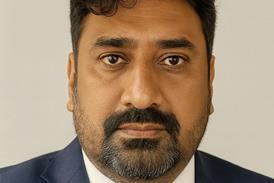Singapore is blessed with political stability and a triple-A rated economy but has an overcrowded and competitive market
Sitting in the centre of south-east Asia, the Republic of Singapore has been blessed with political stability for decades. The island city-state is relatively free from corruption – it ranked fifth in Transparency International’s Corruption Perceptions Index in 2012, after Denmark, Finland, New Zealand and Sweden.
It also boasts a triple-A rated economy that has weathered the global financial crisis better than most other world economies. Moreover, Singapore has the most business-friendly regulation in the world – topping the World Bank’s Doing Business rankings for the past six years – an enviable infrastructure and a low-tax regime. It is perhaps best known as one of the world’s leading financial centres, with more than 600 financial institutions based in the country. No wonder international law firms are flocking there.
‘Singapore’s success over the last 30 years has been to attract financial services and especially the banks that have established headquarters which serve south-east Asia and beyond,’ says Sean Twomey, Asia head of business development at Norton Rose Fulbright, which counts HSBC, Standard Chartered Bank and BNP Paribas among its Singapore-based clients. While the domestic market is relatively small, Singapore’s strategic location, providing access to India, Indonesia, Malaysia, Vietnam and the rest of south-east Asia, is a big pull for western law firms. As Kevin Wong, partner at Linklaters in Singapore, says: ‘The domestic market is only part of the attraction of being here for us. Singapore is a hub for all our south-east Asian activities and also a hub for our work in India.’
The country’s legal services sector is blooming, growing by more than 25% between 2008 and 2012 to an estimated $1.9bn, according to the Singapore Ministry of Law (MinLaw).
Calibrated approach
Liberalisation of the country’s legal sector has been a gradual process. It started in 1981, when the government allowed foreign banks in Singapore to bring their lawyers from New York, London and Hong Kong to advise on offshore transactions such as loan syndications.
Foreign law firms were subsequently allowed to practise foreign law in Singapore as foreign law practices (FLPs) by registering at the Attorney General’s Chambers. Then the Legal Profession Act in 2000 gave the green light to joint law ventures (JLVs) and formal law alliances (FLAs) with Singapore law firms.
But the most significant step came in 2008 with the introduction of Qualifying Foreign Law Practice licences (QFLPs). Designed to root international law firms more firmly in Singapore, and boost the domestic legal market, QFLPs allow licensees to employ Singapore-qualified lawyers to practise in certain areas of Singapore law – these are mainly corporate and commercial areas of law, and exclude litigation in Singapore courts, conveyancing and family law, among others.
The first set of QFLP licences were awarded in 2009 to six foreign law firms, four of which were UK-origin international: Allen & Overy, Clifford Chance, Herbert Smith Freehills and Norton Rose Fulbright. A second set of licences was granted in February this year to four law firms – Linklaters, and US firms Gibson Dunn & Crutcher, Sidley Austin and Jones Day.
MinLaw received 23 applications, including from DLA Piper, Ashurst, Stephenson Harwood and Berwin Leighton Paisner. Given the four-year gap since the first round, Joe Bauerschmidt, a partner in Jones Day’s Singapore office, says that there was an expectation that more licences would be granted. Ten law firms licensed to practise Singapore law, out of some 130 foreign law firms in Singapore, represent ‘a pretty small minority’, he remarks.
Ken Cheung, a partner in BLP’s Singapore office, says: ‘We were looking forward to receiving a licence, but naturally when only four were awarded we were disappointed. The market has not opened up as fast as we had expected.’
Why so few licences? MinLaw says: ‘As was the case for the first QFLP round, licences awarded in this year’s QFLP exercise were to international firms assessed to have the potential to add most value to the Singapore economy….[and] expertise in practice areas that will support Singapore’s growth and position as a regional legal services hub.’ Asked about a third round, MinLaw adds: ‘The government takes a calibrated approach to liberalisation and as such, will continue to assess the conditions in the market before making a decision whether and when to issue more licences.’ This includes ensuring the viability of Singapore law firms throughout the process.
Nankunda Katangaza, Law Society head of international policy, does not anticipate more QFLP awards any time soon. ‘I suspect that [MinLaw] are going through a period of reflection to see what worked and what didn’t, and whether or not this method of licensing foreign law firms is actually optimal.’ Katangaza points to a consultation MinLaw held last year with a view to revising the regulatory framework for the legal profession, including for foreign law firms. MinLaw says recommendations from the review are currently being ‘finalised’, but would not reveal when they would be published.
Despite being ‘very surprised’ that more licences were not granted, Matthew Gorman, head of corporate practice and a partner at Stephenson Harwood in Singapore, is supportive of the Singapore government’s approach. ‘The positive thing is that the liberalisation process continues. Its forward movement, particularly if you were to compare Singapore with India, where the liberalisation process is completely paralysed.’
Gorman welcomes a raft of measures introduced in June 2012 that include allowing foreign law practices based overseas to take 33% (up from 25%) profit and equity share in a Singapore law firm, and for QFLPs to form Joint Law Ventures (JLVs) and Formal Law Alliances (FLAs) with Singapore law firms. JLVs are separate legal entities formed between a foreign and a Singapore law firm and can practise foreign law and certain permitted areas of Singapore law, excluding litigation.
Through FLAs – where law firms remain separate legal entities while benefiting from co-branding and billing, and shared offices – a foreign law firm can offer litigation work through the domestic law firm, and so get round one of the restrictions of the QFLP licence. Clifford Chance, which holds a QFLP licence, has since established an FLA with Singapore’s Cavenagh Law.
For now, other QFLP licensees the Gazette spoke to have sidestepped this barrier by working on a non-exclusive basis with a variety of local law firms on local litigation, which is mostly when matters of Singapore law arise in the course of arbitration. ‘It is not part of our strategy at this point to do local litigation,’ says Kenneth Aboud, Singapore managing partner of Allen & Overy.
Haves and have-nots
A QFLP licence brings a number of advantages for international law firms which are mainly focused on cross-border work, both transactional and contentious. Aboud says: ‘It gives our clients a real one-stop shop when they are doing deals that involve a Singapore law component, so we do not have to engage a local firm. We can do most or all of it ourselves.’
Linklaters’ Wong adds: ‘Singapore law is an important part of many cross-border deals in the region, so it’s much simpler for us to be able to advise on all sorts of transactions within the firm rather than going to an external counsel.’
For Jones Day, the hope is that with a licence to practise Singapore law, the firm will increase its stable of Singaporean clients, which include investment group Temasek, the Government of Singapore Investment Corporation and Mapletree Investment, a pan-Asian real estate development, investment and capital management company.
‘There were a number of products and practice areas that we needed to bolt on in order to be a more effective law firm,’ says Bauerschmidt. Jones Day can now provide advice on Singapore corporate law, including on Singapore Stock Exchange listing vehicles, to complement the firm’s capital markets and investment funds practices. The latter was recently bolstered with the lateral hire of investment funds partner Carolyn McNabb from Sidley Austin.
Law firms that obtained a QFLP licence four years ago say they have already gained significantly from providing Singapore law advice as part of a whole package of services. Although the bulk of Norton Rose Fulbright’s business in Singapore focuses on Indonesia and India, Twomey says that the firm’s international know-how, combined with its Singapore law capability, has landed NRF ‘some very notable Singaporean matters’. Most recently, NRF advised the Singapore Sports Hub Consortium, which include HSBC Infrastructure Fund Management and Bouygues’ Dragages Singapore Pte Ltd, on the financial close of one of the largest sports facilities infrastructure public-private partnership projects in the world, which is due for completion in April 2014.
‘Out of this office we run things from as far east as the Philippines to as far west as the Indian subcontinent in all sorts of practice areas,’ says Michael Walter, south-east Asia managing partner at Herbert Smith Freehills. Highlights of HSF’s recent work include advising UK BG Group on the $360m divestment of its Philippines power assets to FirstGen, and advising Australia’s Woodside Energy on several up-stream oil and gas investments in Myanmar.
‘The QFLP licence has enabled us to recruit, train and develop Singapore-qualified lawyers and to offer Singapore law as a practice area. It gives us an advantage to have that extra string to our bow,’ Walter says. The firm, which is looking to recruit more Singapore-qualified lawyers, including at partner level, has worked on several matters governed by Singapore law, including corporate deals and arbitrations.
Walter adds: ‘As the Singapore legal market becomes more sophisticated and opens up, Singapore law has become more accepted as an international currency and our Singapore law practice has grown. The current chief justice [Sundaresh Menon] is very focused on promoting and developing the use of Singapore law as the governing law in international deals, whether for outbound or inbound work, and we have benefited from that.’
Bauerschmidt concurs, adding: ‘Singapore law is a growing force in terms of dispute resolution and corporate governing law. It’s predictable. The judiciary is of a high level of competence, and the country is free from corruption, so we only expect it to grow in the future.’
What of firms with no QFLPs? Stephenson Harwood’s Singapore office, which has seen ‘significant growth’ from its aviation practice thanks to its budget carrier clients Malaysia’s Air Asia and Indonesia’s Lyon Air, will continue to expand its Singapore office through partner lateral hires (the latest addition being aviation finance specialist Saugata Mukherjee) and new practice areas, including energy and resources. In May, the firm entered into a ‘bilateral association’ with Singapore’s Virtus Law, which entails a non-exclusive co-operation agreement, including for referrals and joint pitches, and is also considering either a JLV or FLA.
Following its failed QFLP bid, BLP is also evaluating ‘all options’ says Cheung. The Singapore office’s biggest source of revenue is the mining and resources sector, with the firm acting increasingly for Singaporean and other southeast-Asian investors. The firm’s clients include Conergy Renewable Energy Singapore Pte Ltd, which BLP has advised on a series of solar photovoltaic projects in Thailand; and Asia Green Capital (Singapore) Pte Ltd, which BLP has advised on developing Indonesia’s first wind project – worth more than $200m. ‘We want to grow in other areas and the natural one for us, given our strength in London in real estate, is to develop a property practice. That is high on our agenda,’ Cheung says.
Overcrowding
There are downsides to the rising prominence of Singapore as a legal centre. Market overcrowding is one of them. Foreign lawyers in Singapore have almost doubled in number over the past six years to more than 1,200, and foreign law firms nearly doubled in number too over the same period.
‘Singapore is becoming a very competitive market with all the major international law firms from the UK, US and Australia, and other parts of the world, all seeking to expand or open new offices,’ says Walter. Domestic law firms including Wong Partnership, Allen & Gledhill and Rajah & Tann, are meanwhile expanding across south-east Asia and beyond, competing head on with western law firms. ‘So, competition and the corresponding pressure on fees is one of the biggest challenges,’ Walter concludes.
Allen & Overy is not immune to the downward pressure on fees, but Aboud argues that business is tougher for the newer arrivals. ‘We have been here for a long time [since 1992]. We are part of a group of six to seven really well-established international law firms, and we don’t have the same challenges that some of the new mid-tier entrants have in terms of trying to build up a global or regional brand.’
Andrew CL Ong, a partner at Singapore law firm Rajah & Tann, argues: ‘I don’t know whether the competitive environment has created significant hardship for either international or domestic law firms. The very fact that you still have quite a few international law firms that are vying to come into Singapore for the QFLP licence suggests to me that business is still viable here.’
Moreover, Cheung observes that with a lot financial institutions, banks and corporations moving into the Lion City, along with high-net worth individuals, there are opportunities firms cannot afford to pass up. ‘Singapore is a place where foreign law firms have to be, because this is where increasingly a lot of business is being done.’ Cheung points to Freshfields Bruckhaus Deringer, which closed its Singapore office in 2007 only to reopen it in 2012. ‘That is because they realised that they have to be here. You have to maintain a presence,’ he says.
Retaining talent
This highly competitive market also poses problems in recruiting and retaining talent. Bauerschmidt says: ‘In order to grant the [QFLP] licences the Singapore government requires that we make certain promises in terms of hiring additional Singapore-qualified partners and associates. And of course we intend to hire more.’ But the problem is finding Singaporean lawyers who are also well-versed in English, New York or Hong Kong law. ‘Singapore-qualified lawyers who tend to do well in international law firms have an international background,’ explains Bauerschmidt, mentioning two of the firm’s partners, Michelle Chen and David Longstaff, both of whom are triple-qualified. Such talent is in ‘short supply,’ he says.
Could forming close ties with Singaporean firms plug that gap? Law firms the Gazette spoke to have no immediate plans on this front, beyond working with local outfits when need arises on a project- by-project basis. Last year, Linklaters terminated a joint venture with Singapore law firm Allen & Gledhill and subsequent merger talks between A&G and Allen & Overy failed.
‘That was a specific opportunity but we couldn’t reach an agreement,’ says Aboud, adding: ‘We don’t need to tie ourselves to any Singaporean law firm because we can do pretty much everything ourselves.’
The same goes for domestic law firms – a sign that, despite an increasingly crowded market, there may still be room for growth, at least for the largest outfits. With more than 350 fee-earners, Rajah & Tann is one of Singapore’s big four law firms alongside A&G, Wong Partnership and Drew & Napier, and the largest in south-east Asia with a presence in China, Vietnam, Thailand, Malaysia, and Indonesia. Ong says the firm is pursuing ‘an independent firm strategy,’ which fits in well the firm’s history, its vision for growth within the region and its committed membership of Lex Mundi, a global network of 160 independent law firms with over 20,000 lawyers.
If skittishness in the international financial markets remains a concern, both local and international law firms have much to gain from the Asean Economic Community (AEC) (Asean: Association of Southeast Asian Nations) with the promise of the free movement of goods, services and labour across a region with 600 million people and a GDP of $1.5tn. AEC is expected to launch in 2015. Ong says: ‘The AEC will change the landscape dramatically. It has tremendous potential for the law firms that are operating in the region.’
International law firms are also fired up about plans by the government to establish an international commercial court in Singapore.
Overall, despite some drawbacks, the island city-state elicits a sanguine attitude among global firms. As Walter says: ‘I am very positive about Singapore as a place to do business in the future for international law firms.’
City cements arbitration credentials
The jewel in Singapore’s legal services crown is the Singapore International Arbitration Centre. Established in 1991 as a not-for-profit non-governmental organisation, SIAC, which administers arbitration under its own rules, is now recognised as a one of the pre-eminent arbitration seats in the world.
Arbitration activity has been growing fast: in 2012, SIAC received 235 new cases – a 25% increase on 2011 – and the total sum of disputes arbitrated was $3.61bn. SIAC is increasingly popular among mainland Chinese parties (claimants and respondents) which generated the highest number of filings in 2012, with India following close behind, while filings from Indonesia and the US took third- and fourth-place respectively. Hong Kong, SAR and Malaysia also contributed a significant number of new cases last year.
So what is behind SIAC’s rising popularity? ‘SIAC has gained traction and credibility as a regional arbitration centre as a result of being surrounded by jurisdictions where the dispute resolution process is much less robust and as such is seen as a nearby neutral forum,’ says Matthew Gorman, head of corporate practice and a partner at Stephenson Harwood in Singapore.
Geographical convenience and cost play a role too. ‘These days London and New York are viewed as expensive,’ says Joe Bauerschmidt, a partner in Jones Day’s Singapore office. ‘If you are an Asian issuer and you are based in Mumbai or Chennai, in Jakarta or Surabaya, or in Ho Chi Minh or Hanoi, it is an order of magnitude cheaper in some cases, and certainly a multiple in other cases, to come to Singapore to arbitrate your case.’ Bauerschmidt adds that Singapore courts have a reputation for competence and integrity, and are very supportive of international arbitration.
SIAC is also driving penetration of Singapore law beyond the Lion state. English and New York law are still prevalent across the region but, remarks Ong: ‘We are seeing quite a large increase in the number of transactions where Singaporean law is the governing law of choice, and this includes some major transactions involving large Chinese or Indian parties.’
For many law firms, SIAC is very much part of Singapore’s attraction. ‘It’s one of the pieces of the jigsaw that makes Singapore work,’ says Gorman, whose firm plans to set up an international arbitration practice.
‘The growth in SIAC arbitration has been an important focus for us so it has impacted very positively on our global dispute resolution practice,’ adds Walter, pointing to Herbert Smi th Freehills’ strong reputation in litigation, arbitration and alternative dispute resolution in Asia and elsewhere.
The chief justice of Singapore has unveiled plans for a Singapore International Commercial Court (SICC). Justice V K Rajah and senior minister of state for law Indranee Rajahhas are leading a group which includes Supreme Court judges, Singapore Bar members and international lawyers to develop a framework to establish SICC.
‘This is an exciting and important step in our efforts to grow the legal services sector and address the rising demand for commercial dispute resolution here in Asia,’ says MinLaw. Further details on SICC will be released once the study is completed.
Marialuisa Taddia is a freelance journalist
































No comments yet